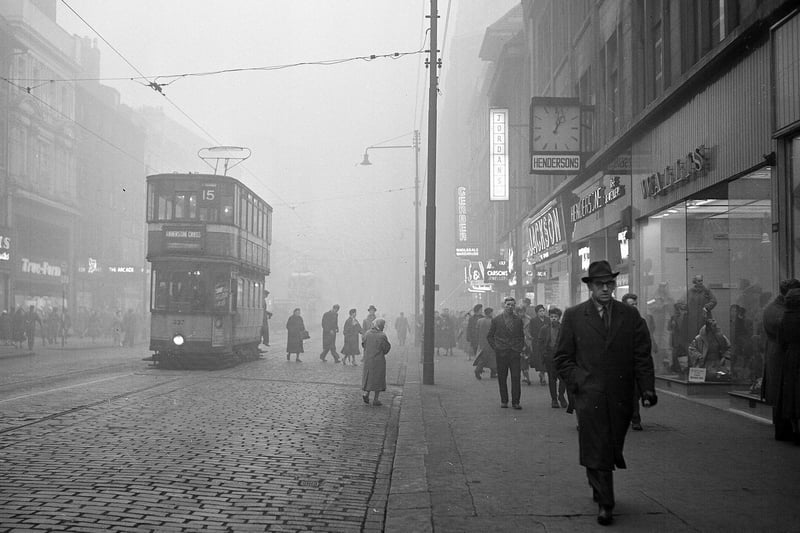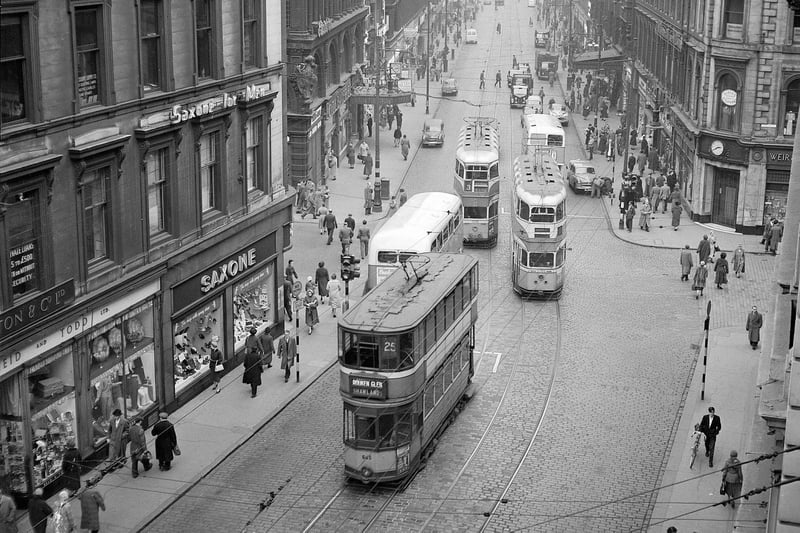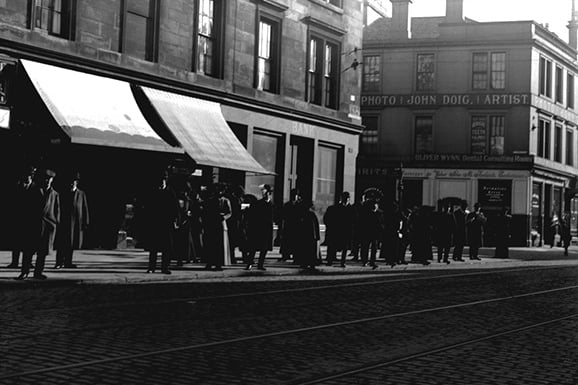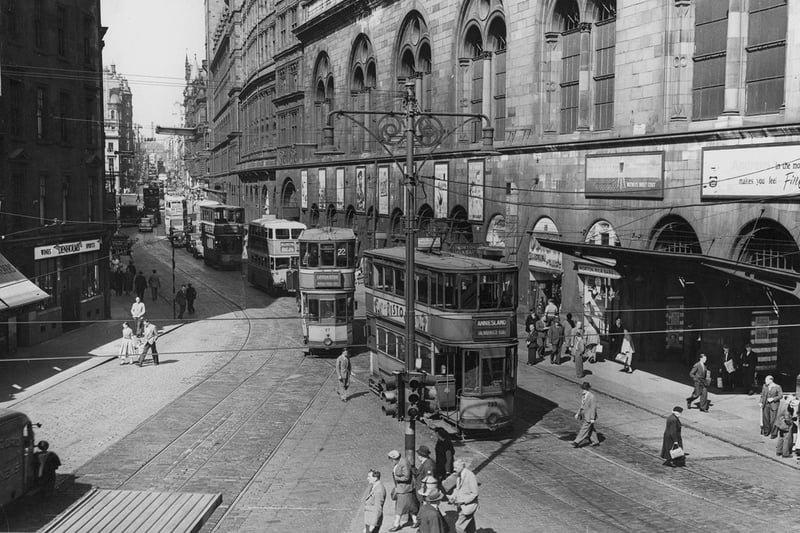For nigh on a century Glasgow had one of the most extensive city tram systems in the world - today we wanted to look back in time through old photographs to when trams were most Glaswegians preferred mode of travel.
You can spot them in almost any old photo or streetscape of Glasgow - they were absolutely everywhere in the city, bussing up and down the old streets of Glasgow town day and night.
The wires of the tram system projected a web overhead - giving the city a unique criss-cross canopy. At its peak, the Glasgow Corporation Tramway was one of the largest urban tramway systems in Europe, had over 1000 council-owned trams, and over 100 total route miles by 1922. In his book, Glasgow by Tram, author Ian Stewart writes that the trams would run in two-minute intervals, and in Renfield Street, the service was so intensive that a tram would pass every 12.5 seconds. The first horse-drawn tram of 1872 connected St George’s Cross and Eglinton Roll - but once it had been established, the tram service reached far beyond the city limits with routes reaching Milngavie, Paisley, Renfrew, Clydebank, Uddingston and Airdrie.
Initially the trams were drawn by horses, but began to become electrified around the turn of the century. After the great war, women were allowed to continue as tram drivers - and were not asked to return to either the home or ‘womanly’ work as was the norm for most industries.
Women worked as tram drivers until the system closed in 1962. At the time women were not allowed to be bus drivers - and so were forced to take a backwards step in Glasgow’s workplace.
The electrification of the system required a significant amount of electricity - which was generated at a station built at Port Dundas. The Pinkston Power Station opened in 1901 - powering both the tram system and the Glasgow Subway. It operated for 57 years, dominating the city’s skyline with its massive cooling tower until it ceased operating in the early 1960s ahead of its demolition in 1977.
In 1953, the decision was taken not to replace part of the ageing fleet, which marked the beginning of the end for the service. The view at the time was that petrol & diesel buses were the future of transport - and would offer more flexibility to both the council and to commuters.
At the time of its closure in 1962, there was only one remaining route in operation - the lone number nine, which ran from Auchenshuggle to Dalmuir.
It was the last of the old city tramways in the UK to close before new trams were built in cities like Birmingham and Manchester in the 90s. Blackpool on the other hand kept their seaside tramway which has remained in operation from 1885 to this day.
Glasgow’s tram system was well-loved by its denizens, as on the final day the trams were in operation (September 4, 1962) the council held a procession of 20 trams through the city from the depot at Dalmarnock to the depot at Coplawhill.
The event was attended by 250,000 people from across Scotland as they said goodbye to the city’s tram system that had served them for nearly 100 years - many people laid pennies on the tracks so they would have a reminder of the trams to keep.

1. Argyle Street
A tram rides down Argyle Street in the fog.

2. Union Street (1960s)
Trams in Union Street at the junction of Renfield Street and Gordon Street. The final tram completed it’s journey in Glasgow in September 1962.

3. A busy tram stop (Circa. 1912)
A busy tram stop on either Dumbarton Road or Peel Street in the early 20th century

4. Trams on Hope Street
Hope Street doesn't look too different from today - albeit the congestion is now all cars rather than trams
